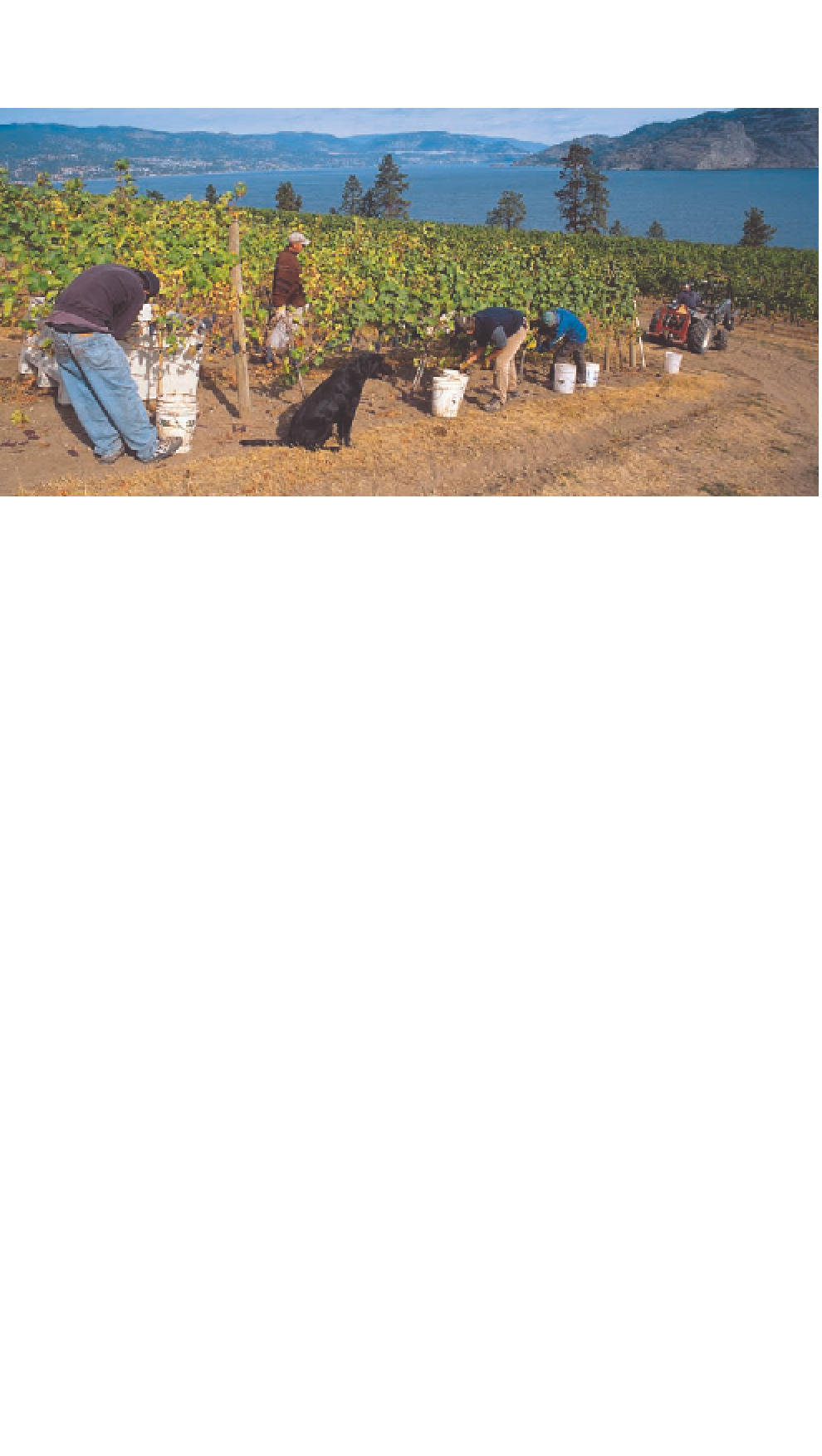Travel Reference
In-Depth Information
5
Wine-making season in British Columbia.
© British Columbia Wine Institute
grapes are planted in the southeast-
ern part of the island, near the city of
Duncan.
desert area. For its part, the north of the
valley receives less than 40cm of rain.
The sout is mainly planted with classic
red vinifera grapes, while French and
German varietals of white grapes are
planted in the north.
The Fraser Valley, a farming commun-
ity with fertile land, stretches east in
the city of Vancouver; the province's
largest agricultural area, it is growing
rapidly. There are currently some 20ha
of grapes and two wineries less than a
half-hour's drive from Vancouver. This
coastal production region enjoys warm,
rainy winters and hot, dry summers.
As in the backcountry (Okanagan-
Similkameen), irrigation is required for
grape growing.
West of the Okanagan Valley, across
the mountains, is the desert highland
growing region of the Similkameen
Valley. Nestled along the picturesque
Similkameen River and surrounded by
steep mountains, the region's two win-
eries have 16ha of grapes planted along
the banks of the river.
The climate of the Okanagan and
Similkameen valleys is the result of
their location on the leeward side of the
Coast Mountains. These valleys benefi t
from warm, dry summers, long periods
of sun and low humidity.
The interior of British Columbia is home
to the largest and oldest wine region of
the province: the Okanagan Valley. This
magnifi cent valley, some 150km long,
is dotted with over 30 wineries with
around 1,200ha of land planted with
top-quality vines. The south of the val-
ley, which receives less than 15cm of
rain per year, is Canada's only classifi ed
4
A hillside vineyard overlooking Lake
Okanagan.
© Cedar Creek Estate Winery / Brian Sprout
pages 284-285
4
Banff National Park, the best-known and most
popular of all of Canada's national parks.
© iStockphoto.com / Elizabeth Quilliam
pages 286
4
Yoho National Park.
© Philippe Renault


